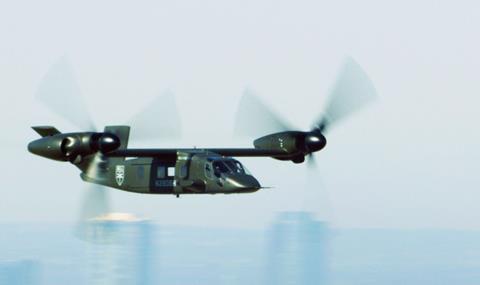US Special Operations Command (SOCOM) has yet to decide if it intends to acquire any of the US Army’s developmental Future Vertical Lift (FVL) aircraft.

Speaking at the Special Operations Forces (SOF) Week conference in Tampa on 9 May, SOCOM acquisitions executive Jim Smith said the command is still assessing whether it intends to field the still-experimental rotorcraft.
“Those conversations are ongoing,” Smith says.
With the FVL initiative, the army is seeking to to modernise its aviation fleet – an effort last undertaken in the 1980s after the Vietnam War.
The programme covers two marquee aircraft development programmes: the Future Long Range Assault Aircraft, which is to replace Sikorsky UH-60 Black Hawks, and the Future Armed Reconnaissance Aircraft scout platform, which will perform missions the army previously assigned to since-retired Bell OH-58 Kiowas.
SOCOM operates a separate procurement system from the main components of the US military, including for aircraft acquisitions.
Its aviation assets include types not operated by conventional forces, such as Boeing’s AH-6 Little Bird and the L3Harris-Air Tractor’s Armed Overwatch platform. In other instances, SOCOM procures standard aircraft retrofitted with specific modifications; examples include Lockheed Martin’s MC-130J transport (a variant of the company’s C-130 tactical transport) and Sikorsky’s MH-60M helicopter (a modified UH-60).
Despite sitting outside the army’s central procurement system, Smith says SOCOM has “been involved with FVL since its inception”, and that its procurement officers helped “inform” FLRAA and FARA designs. That means the aircraft may be suitable for SOF missions – or at least be easier and cheaper to modify to SOF’s requirements.
“There are requirements that are peculiar to SOF,” Smith says, citing the need for in-flight refuelling to enable longer-range flights.
While standard army aircraft do not carry in-flight refuelling equipment, SOCOM-specific airframes – like the MH-47G variant of Boeing’s CH-47 Chinook heavy-lift helicopter – do. Because such post-assembly modifications can be expensive and complex, SOCOM took an early role in helping design the FVL platforms.
Smith says SOCOM’s discussions about FVL procurement are ongoing, with no decision timeline firmly established, and that the command is evaluating which, if any, FVL modifications it may pursue. He also notes that the army office supporting special operations troops – US Army Special Operations Command – is on the distribution plan for both FVL rotorcraft once they enter production.


























